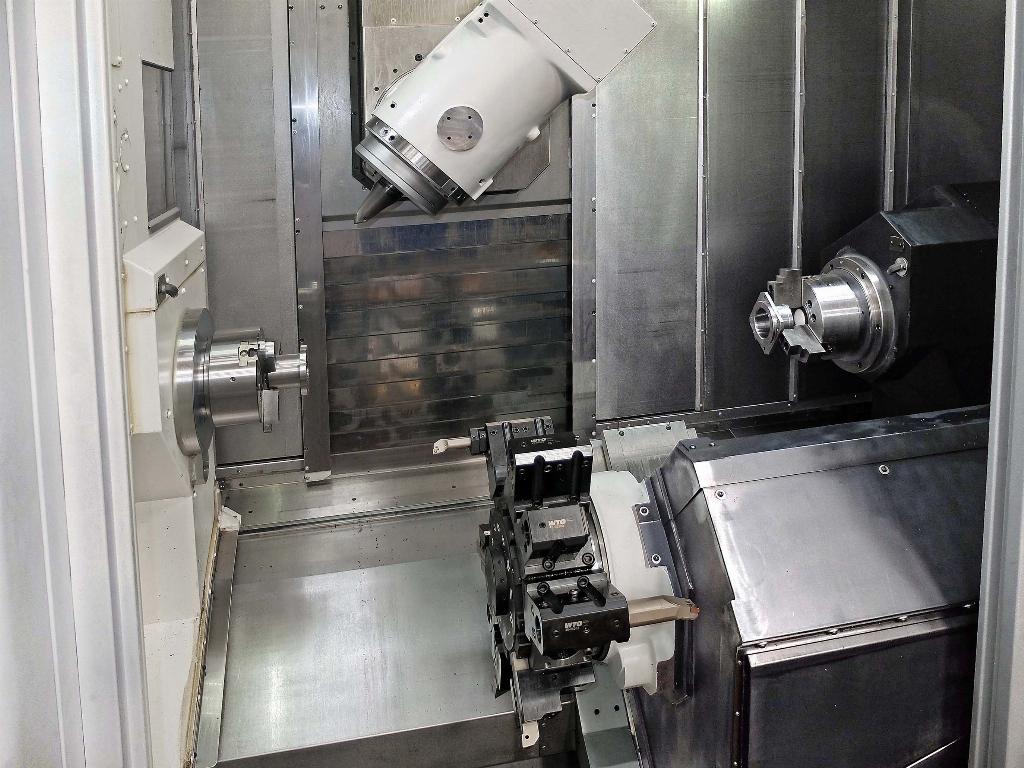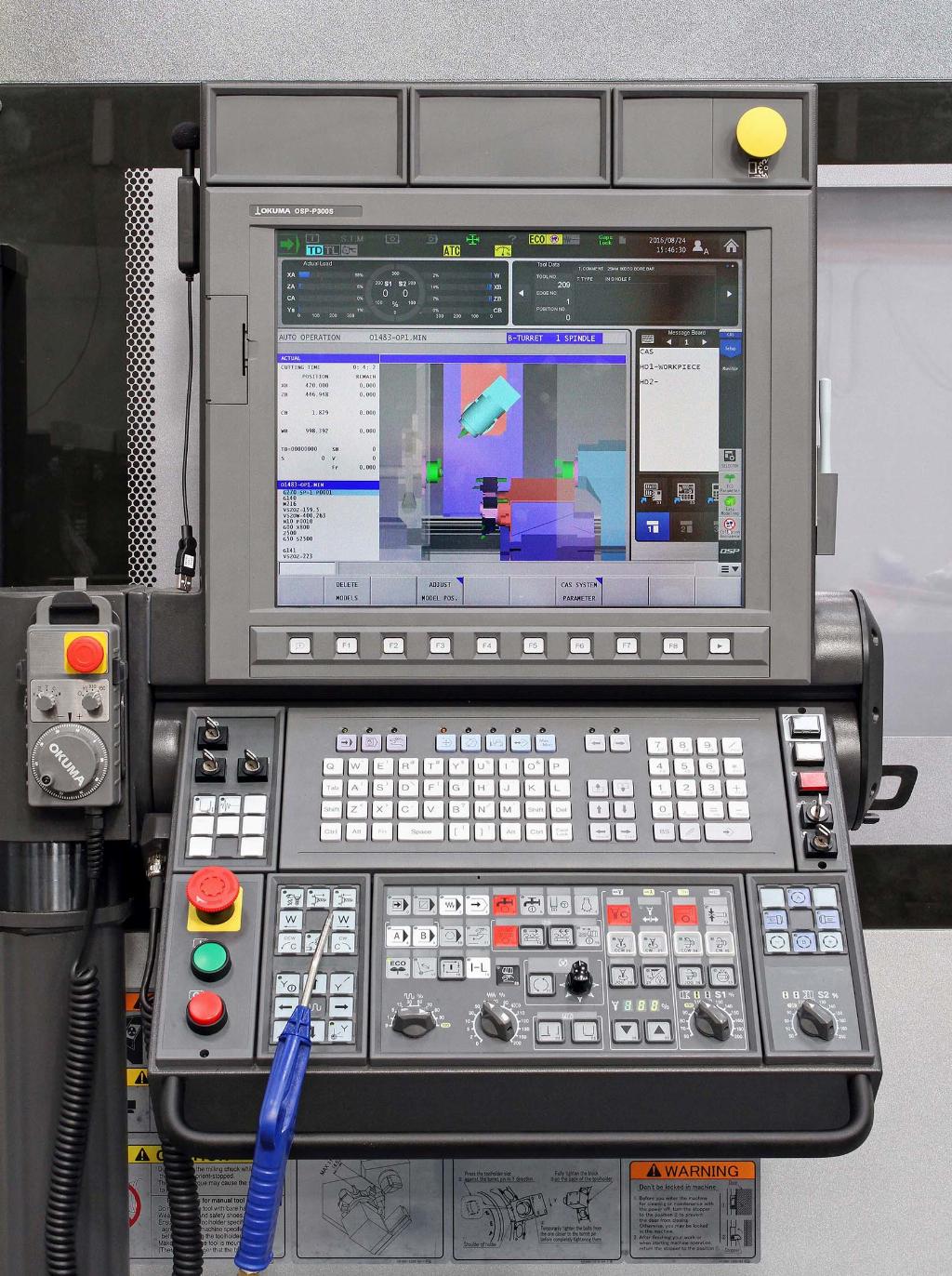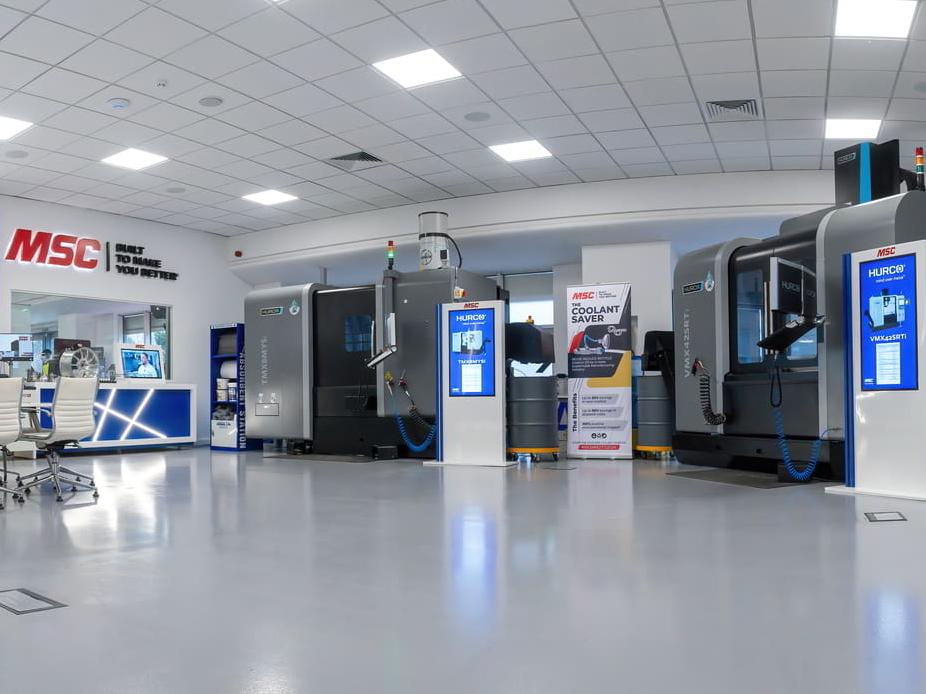Gearing up

In June 2016, contract machining firm Norjon Precision Engineering upgraded its multi-tasking, turn-milling capacity with the addition of a Japanese-built Okuma Multus U3000 2SW from UK agent, NCMT.
Equipped with a Y-axis on the column and a motorised B-axis tool carrier as well as a 12 station lower turret, the twin-spindle machine is capable of 3+2-axis machining, although fully interpolative 5-axis machining is an option.
At its 14,000ft² factory in Gosport, the subcontractor undertakes CNC turning and turn-milling, gear cutting, grinding and 5-axis prismatic machining for a varied customer base spanning the food, marine, printing, yachting and power generation sectors.

Regarding the purchase of his first Okuma, managing director Kevin Fox says: “We have a policy of buying highly capable machine tools and then finding work for them, rather than investing to fulfil a specific contract.
“The first job onto the Multus was a family of 10 high precision components for the defence industry which have to be machined from 316 stainless steel billets to within 10µm tolerance on some dimensions in batches of typically 50-off.
“We previously produced the parts in two hits on a lathe and a 5-axis machining centre, but they now come off the Okuma complete. Also, it’s much easier to hold tolerance without a second clamping and manufacturing cost per part is 30% lower than previously due to less manual handling.”
It was a similar story when manufacturing mould tools for producing paper cups for the drinks dispensing industry where four operations have become two, resulting in production cost savings of around one third.
Gear hobbing option
Another job that has been earmarked for the mult-tasking centre is the production of nitrided EN40 spline tooling for a US manufacturer of automotive test rigs. With this in mind, Norjon bought Okuma’s optional gear hobbing package, which will allow the components to be produced in one hit. Again, the result will be substantial economies in production costs compared with the previous production route of turning on a lathe and gear cutting on another machine.
The ability to produce gears economically in any quantity and of any size up to the lathe’s capacity on a single machining platform provides flexibility and enhanced accuracy as well as lower capital investment. The hobbing option synchronises the C-axis spindle and the motions of the tool in the B-axis to produce straight or helical splines.
Step up in quality
Mr Fox continues: “Over the years we have gradually raised the quality of the machine tools we buy. The aim has been to maximise single set-up machining, reduce costs, improve accuracy and add further value to the components we produce.
“We wanted a step up in mult-tasking turn-milling capability and visited Okuma in Japan a couple of years ago to see Multus lathes being built. The weight and rigidity of the machines was evident and so too was the quality. For example, the machine employs a box guideway for the lower turret rather than linear rails and this sort of attention to detail is reflected throughout.”
He explains that if a manufacturer is chasing tight tolerances, only top-end production equipment will do. Otherwise the machinist is forever fighting the machine to achieve accuracy and that means more manual intervention, higher costs and squeezed profit margins.
Advanced functionality
One of the key features of Okuma machine tools that swayed Mr Fox towards buying the Multus U3000W is the manufacturer’s collision avoidance system software which runs in the proprietary OSP control. The entire machining area including the spindle head, slideways and even the guarding is monitored in real time and if interference is predicted, the machine stops instantly to prevent damage.

Another Okuma software function that supports Norjon’s ability to produce high precision parts is Machining Navi which detects cutting conditions caused by vibration. Either a spindle speed change is recommended so that it can be set manually to suppress chatter, or speed adjustments are applied automatically.
The machine is capable of producing components up to 1,500mm long and is fitted with an 8 inch chuck. Its specification includes 22kW main and opposed C-axis spindles and a -30 to +210° swivelling B-axis tool spindle rated at 22kW/12,000rpm with Capto C6 tool interface. Feed rates are up to 50m/minute in the X- and Z-axes, 40m/minute in the 250mm Y-axis, and the machine can be fitted with linear scales to maintain the inherent high accuracy over many years of use.
In the first couple of months of operation at Gosport, in order to meet urgent deliveries, the Multus was programmed on the shopfloor at the OSP control, a process that Mr Fox describes as straightforward for his highly skilled operators, one of whom has many years’ experience operating Okuma machine tools. The subcontractor will move to offline preparation of programs using the company’s seats of FeatureCAM in the near future.
NCMT www.ncmt.co.uk
Norjon Precision Engineering www.norjon.co.uk















